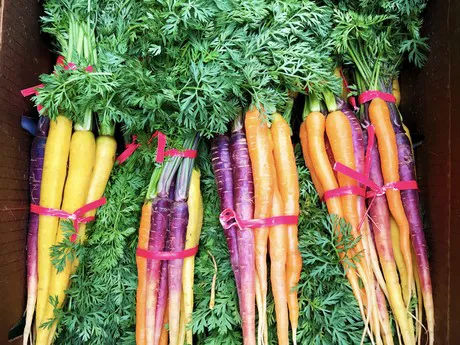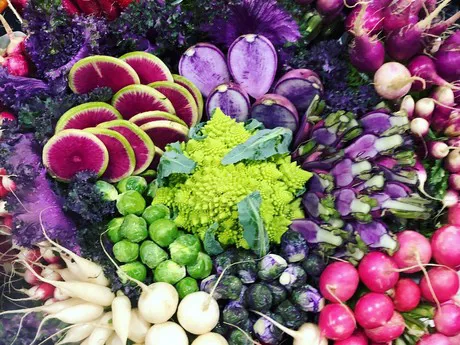Supply levels of spring vegetables are mixed coming out of California’s Santa Maria Valley.
“Our coastal growing region in the Santa Maria Valley has received a steady amount of rainfall which has enriched our aquifers. However, the rain can cause disruptions in our planting schedule, leading to short supplies on certain items,” says Matt Hiltner of Babé Farms, Inc. in Santa Maria, Ca.
He notes that supplies are good with some key core items including Baby Colored Carrots, Tokyo Turnips, Baby Bok Choy, Baby Lettuces, Kohlrabi and Watermelon Radishes. “We expect things to further improve as we move deeper into spring,” he adds, noting that supplies are fairly consistent with last year’s levels.
One additional item added to this year’s line up includes “Blooming Carrots” which are bunches of multi-colored baby-sized carrots. (Each bunch includes three to four colors such as orange, purple, yellow or white.)

Specialties in Santa Maria
Hiltner also notes that the majority of Babe’s specialty items are grown in the Valley since the mild, Mediterranean climate and sandy soil make it possible to farm year-round. Items that don’t fare as well there are sourced from partner growers in Baja, Mex.
Meanwhile competing product comes from smaller farmers’ market-style growers throughout the U.S. “While many of these types of growers produce beautiful fruits and vegetables, it’s possible their food safety and farming practices aren’t necessarily in line with industry standards,” adds Hiltner. “We make food safety and quality our top priorities.”
As for demand, Hiltner notes that most of it comes from the foodservice side of the business. “The vegetables we grow tend to translate best to the “white tablecloth” type restaurants and other sectors of fine dining,” he says. “That said, Babé Farms items are available at a number of fine retailers throughout the U.S.”

The Millennial push
Hiltner also says that with consumers increasingly interested in plant-based diets and healthy eating, Babé sees a growing market for specialty vegetables. “Millennials are huge proponents of these trends and love to post photos of their food on social media. We constantly see chefs and retail buyers posting photos of our bright and colorful vegetables,” says Hiltner. “With social media becoming a larger and larger part of society, we don’t see this trend slowing down anytime soon.”
Babé’s array of vegetables will be on display at this week's Canadian Produce Marketing Association show taking place April 2-4 in Montreal, Que. “It never gets old seeing the excitement in people when they lay eyes on our colorful product line,” says Hiltner, adding that Babé will be at booth #1219. “It’s always one of our favorite shows to attend. We have some amazing customers in Canada and CPMA is our opportunity to touch base with them.”
For more information:
Matt Hiltner
Babé Farms, Inc.
Tel: +1 (805) 925-4144
matt@babefarms.com
www.babefarms.com
